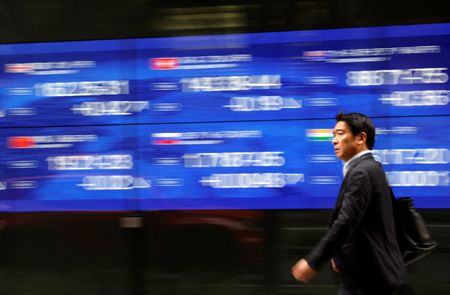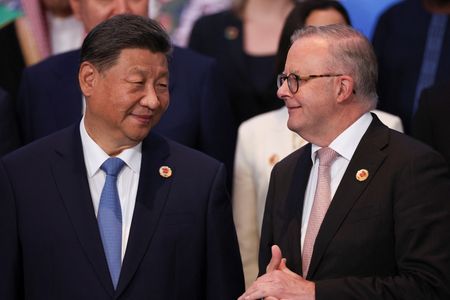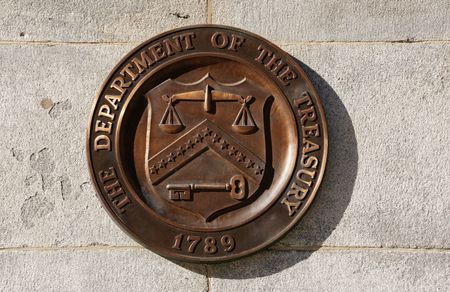By Jamie McGeever
(Reuters) – A look at the day ahead in Asian markets.
The drum beat of a global trade war may be getting louder by the day, but investors have started the week seemingly prepared to ignore the noise, take their cue from the flow of solid U.S. earnings and move further out the risk curve into assets like stocks.
There are pockets of weakness, of course, where the waves of U.S. tariffs are likely to crash hardest. The Mexican peso, for example, is under pressure again, and the MSCI Emerging Market Equity Index ended the day flat on Monday.
But considering the backdrop of U.S. President Donald Trump escalating trade tensions with promises of fresh tariffs on imports into the U.S., investor sentiment is holding up pretty well. That may change in the blink of an eye, but there’s an underlying resilience supporting risk markets right now.
The blizzard of tariff-related announcements from Washington is thickening. Trump on Sunday said he will introduce 25% tariffs on all steel and aluminum imports, on top of existing duties on the metals. On Friday, he announced reciprocal tariffs on all countries, matching the tariffs levied by them.
As Dario Perkins at TS Lombard notes, it’s becoming impossible for investors to price risk, as Trump ‘floods the zone’ with a torrent of proposals on anything from tariffs to government spending. “Fake news,” as Perkins puts it.
Which ones are serious, which are half-baked, which are off-the-cuff thoughts that no chance of being implemented? As far as the tariffs go, “Trump’s revealed preference is to make big threats, create drama, and then use the slightest excuse not to follow through. Bullish thesis confirmed,” Perkins says.
The bullish thesis is being backed up by U.S. earnings. Aggregate S&P 500 earnings growth for the fourth quarter is running at nearly 15% year on year, according to LSEG I/B/E/S. Goldman Sachs analysts reckon earnings are on track for their best quarter in nearly three years.
Asia’s calendar on Tuesday is light. Currencies will be sensitive to tariff-related news and sentiment, and in China the yuan bears close monitoring as the spread between the spot market rate and central bank’s daily fix approaches record levels.
Since Chinese markets reopened after the Lunar New Year holidays, the yuan has been under heavy pressure, and the dollar has risen four days in a row to trade back above 7.30 yuan. The high of 7.35 yuan from September 2023 is coming into view – a break above that would be the first since December 2007.
But the People’s Bank of China has been fixing the yuan tightly around the 7.17 per dollar mark in an effort to keep the exchange rate stable and prevent further depreciation, widening the spread between the two rates.
Here are key developments that could provide more direction to Asian markets on Tuesday:
– Trump tariff announcements
– China central bank’s yuan fixing
– Australia consumer sentiment (February)
(By Jamie McGeever)









